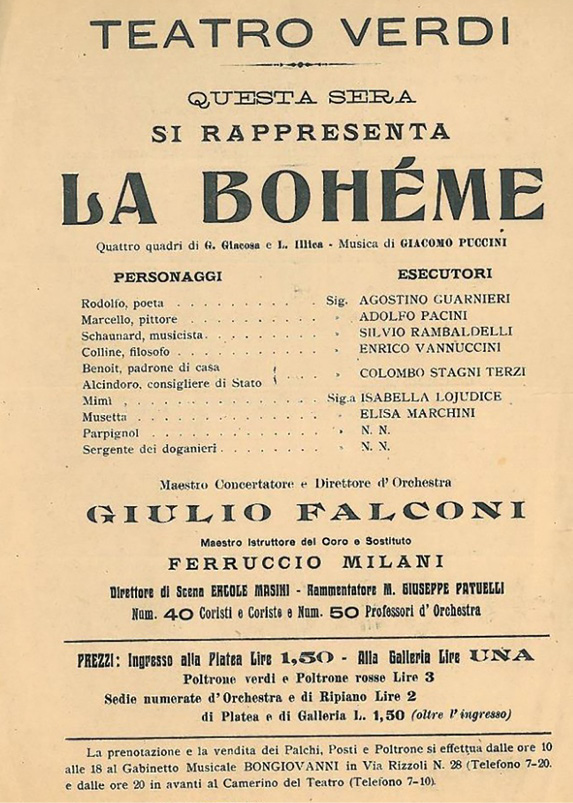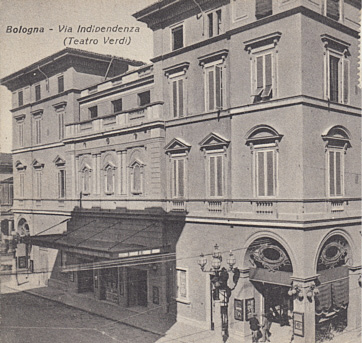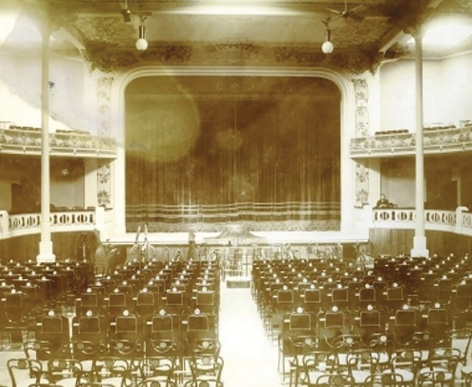
Our stop on Bologna’s lost theatres is dedicated this time to the Teatro Olimpia, also known in the city as Teatro Verdi.
Located at the back of Palazzo Giordani, at the corner of today’s Via Galliera and Via Milazzo, it had taken the place of the Pincio Amphitheatre, built in wood in the courtyard of that same palace. With a capacity of about 1,400 spectators, it opened on April 13, 1907, and from then on offered vaudeville and operettas, variety shows and sporting events to a mainly popular audience.

Olimpia’s activities lasted until May 31, 1908, but, like the mythical Phoenix, the space was suitably renovated to the design of engineer Lambertini, who had an innovative, and dare we say brilliant, idea to address the building’s low height: lowering the ground floor to a lower level than the entrance porch and the street in front. Renamed Teatro Verdi, it was re-inaugurated, “amidst a great pageantry of light bulbs and arc lamps,” with Mignon by Ambroise Thomas, a famous repertory opera some 40-year-old, and resumed scheduling performances from the autumn of that same year, immediately acquiring an excellent reputation.

As in other performance venues in the city, productions of different genres alternate on its stage: from dialectal comedy to modern revue, from variety shows to marionettes (let us recall the 1923 debut of Umberto Tirelli with his national theatre of wooden heads), it became over time a stage for renowned prose companies, such as that of the famous silent film actor Max Linder, the Rome Company or the Bandanello Company. There is no shortage of music, with performances by radio stars and stagings of operas, such as a much-applauded Boheme.
Renovated in 1928 by architect Giulio Ulisse Arata, who superimposed two galleries on the stalls, and decorated by painter Giovanni Romagnoli, it became the best “modern theatre” in the city, home since 1931 to the Stabile Filodrammatica, an amateur company with a repertoire of remarkable quality.
The theatre’s activity ended with the air raid of September 25, 1943. After the war, the building was rebuilt, but the theatre did not resume its operations. In its place, the Capitol cinema opened in 1959.




.png)